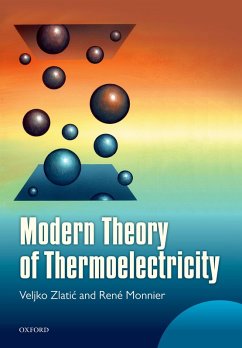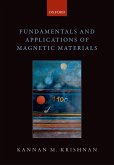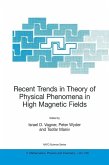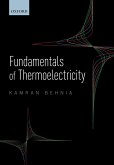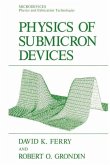In recent years, there have been important developments in the design and fabrication of new thermoelectrics. While a decade ago, progress was mainly empirical, recent advances in theoretical methods have led to a deeper understanding of the parameters that affect the performance of materials in thermoelectric devices. These have brought the goal of producing materials with the required characteristics for commercial application a significant step closer. A search for efficient materials requires a fully microscopic treatment of the charge and heat transport, and the aim of this book is to explain all thermoelectric phenomena from this modern quantum-mechanical perspective. In the first part on phenomenology, conjugate current densities and forces are derived from the condition that the rate of change of the entropy density of the system in the steady state is given by the scalar product between them. The corresponding transport coefficients are explicitly shown to satisfy Onsager's reciprocal relations. The transport equations are solved for a number of cases, and the coefficient of performance, the efficiency, and the figure of merit are computed. State-of-the-art methods for the solution of the transport equations in inhomogeneous thermoelectrics are presented. A brief account on how to include magnetization transport in the formalism is also given. In the second part, quantum mechanical expressions for the transport coefficients are derived, following the approach by Luttinger. These are shown to satisfy Onsager's relations by construction. Three lattice models, currently used to describe strongly correlated electron systems, are introduced: the Hubbard, the Falicov-Kimball, and the periodic Anderson model (PAM), and the relevant current density operators are derived for each of them. A proof of the Jonson-Mahan theorem, according to which all transport coefficients for these models can be obtained from the integral of a unique transport function multiplied by different powers of the frequency, is given. The third part compares theory and experiment. First for the thermoelectric properties of dilute magnetic alloys, where the theoretical results are obtained from poor man's scaling solutions to single impurity models. Then it is shown that the experimental data on heavy fermions and valence fluctuators are well reproduced by the transport coefficients computed for the PAM at low and high temperature. Finally, results obtained from first principles calculations are shown, after a short introduction to density functional theory and beyond. A number of useful appendices complete the book.
Dieser Download kann aus rechtlichen Gründen nur mit Rechnungsadresse in A, B, BG, CY, CZ, D, DK, EW, E, FIN, F, GR, HR, H, IRL, I, LT, L, LR, M, NL, PL, P, R, S, SLO, SK ausgeliefert werden.

